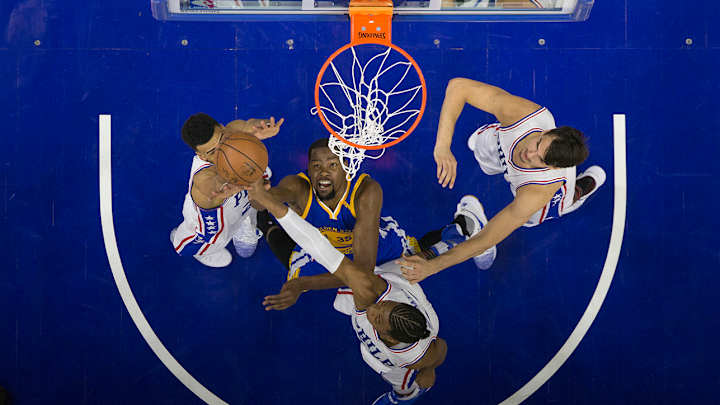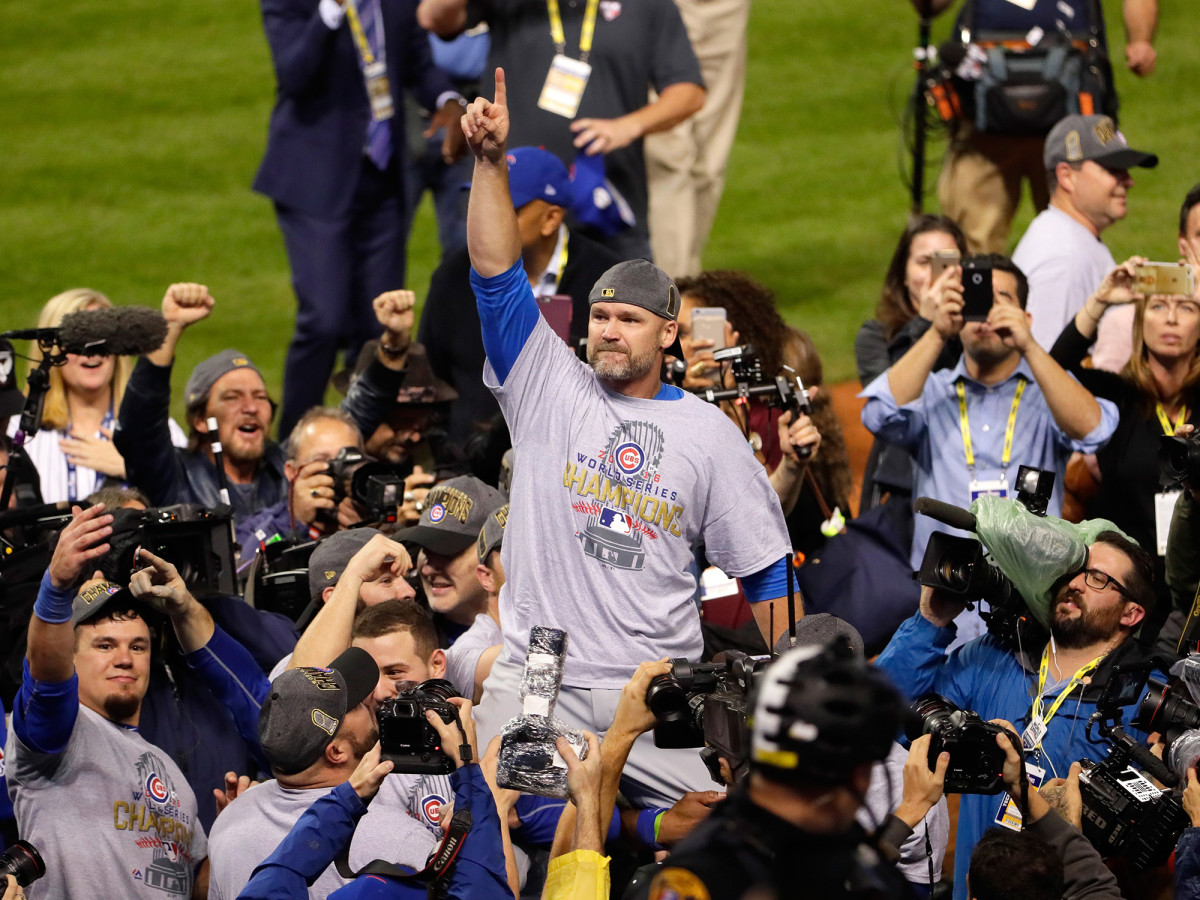Eight things we learned from the 2017 MIT Sloan Sports Analytics Conference

There was something for everyone at the 2017 Sloan Sports Analytics Conference, with panels covering a wide range of topics, including sports, tech and politics. No longer solely focused on data mining mainstream professional sports, much of SSAC was dedicated to broadening the appeal of analytics. These efforts included bringing more data to fans, data-driven storytelling, esports and political forecasting.
Though the Sloan conference has lost some of the insider feel—including nearly 3,500-plus attendees from all over the world will do that—the conference still offers the unique experience of hearing about the latest advances in analytics and data science while sitting next to a NBA general manager or CEO.
Sloan Sports Analytics Conference Day 1: Stephen Curry's shot, Tommy John alternatives
One notable aspect of this year’s conference? Analytics experts are not only coming from the math lab, but from the sideline as well. Several conference panelists and presenters played pro sports, including Chris Collinsworth of ProFootballFocus, David Anderson of Gains Group, Shane Battier of the Miami Heat and more.
Former athletes inhabit a unique area in the field of analytics, one that combines street smarts with smarts. After all, in the gut vs. data debate, one of the knocks on analytics has always been how formulas and projections sometimes fail when applied to situations on the court or field. While analytics is here to stay, an appreciation of both sides may do a lot to further the acceptance of the field.
After two days in Boston, here are the top highlights and takeaways from this year’s SSAC.
1. After one of her best seasons at age 36, Seattle Storm guard Sue Bird credits mental training, rather than physical workouts, for helping to elongate her career as a professional basketball player. Psychological toughness was a common topic, but Bird also discussed the thin line between analytics and a mental block: “I was told I shoot better going left. I mean I already knew that, and then I see a team pushing me right and I’m like wait a minute and you try to go right and you’re mental about it.“ Bird says, at this point in her career, she would rather data tell her where her teammates will be successful.
Nike unveils Zoom Vaporfly Elite, Vaporfly 4% for optimistic sub-two hour marathon attempt
2. How can players remain in the game as they age? Marcus Elliott of P3 Applied Sports Science said it’s critical to detect problems and compensation patterns in movement early in a career in order to make a difference later on. For example, Elliot said data from Kevin Durant’s recent knee injury could be useful to tell the Warriors whether or not Durant was moving at a pre-injury level. Elliott stressed these details are “breadcrumbs out in the forest that’ll lead you back to where he was as a top player in the league.”
3. During a panel on the future of basketball analytics, NBA player Luis Scola discussed a reaction drill that he and teammates used to increase deflections. Players that scored better in the reaction drill—a system that used patterns of lights—generally recorded more deflections (and thus turnovers on defense). Scola and teammates used the system and became adept at reacting to the lights, but did not notice any change in deflections. His point: you have to make sure that the data or technology will result in improvements on the court, not just with the test itself.
4. David Anderson, former NFL receiver, had this to say about the NFL and analytics: “If it doesn’t end up on the play card, it won’t make a difference.” Both Anderson and co-presenter Owen Daniels, a former NFL tight end, agreed with an earlier comment from Tedy Bruschi, in which he stated that for football, analytics would be most useful if they could tell him about an opponent’s tendencies.
5. One of the more interesting research papers, authored by Panna Felson and Dr. Patrick Lucey, discussed the use of 3D STATS technology in analyzing shooting styles in the NBA. Besides detecting the influence of different body positions on shooting percentage—think off-balance or off the dribble shots vs. stationary shots—the application has value for injury prevention and post-injury recovery. Using an already-established player model, irregularities in a player’s shot technique could alert a trainer or doctor to a possible injury. The STATS technology could also be used after injury and rehabilitation to determine if a player had returned to a pre-injury level of technique. For performance, coaches can also see how a player’s technique changes over a season or career.
Add some intelligence to your workout with these NFL Combine-inspired wearables
6. The entire basketball world, including the NBA, is shooting three-pointers the wrong way. That’s according to findings from a research paper aimed to define the parameters of a successful three-point shot attempt, using the Noah Basketball shooting system to analyze six shooter factors from over 1.1 million three-point shots.
One significant takeaway was that the entire population of shooters, across all skill levels, is practicing incorrectly. The best shooters hit a spot 2-inches behind the center of the basket (in the forward-back direction) more consistently—how often a shooter hit this spot correlated with shooting percentage. The angle of the shot path also made a difference in three-point shooting percentage—abut 45-degrees was found to be the optimal angle.
7. Get David Ross’ agent on the phone, because his free agent value just went up. One of the research papers, admittedly submitted by two Cub fans, sought to quantify the “David Ross Effect,” or “the indirect impact that an individual player can have on team wins through making their teammates better.” Using FanGraphs’ wins-above-replacement, the research papers tried to quantify the unquantifiable: the effect of a player on other player’s performances. The authors called this factor player-chemistry wins-above-replacement (pcWAR).
The conclusion: glue-guys like the just-retired Ross can lead a team to 3-4 additional victories per season, a number that is on par with the WAR of a star player. The research also showed that certain types of players are more likely than others to serve in this “intangibles” role. More than other positions, designated hitters, relievers, first basemen, and catchers are more likely to contribute positively to team chemistry.

8. Fancy yourself a racecar driver? Well, driving a racecar for several hours is a lot harder than you might think. IndyCar regulations prohibit the use of power steering so finding a way to minimize a driver’s muscle fatigue during a race can have an important performance benefit for both drivers and teams.
Using wearable sensors embedded in the fire retardant suit of driver Tony Kannan, researchers determined patterns of muscle usage during an IndyCar race. One of the more interesting findings detailed the potential relaxation points for drivers to save muscle fatigue in their forearms, one of the major challenges in IndyCar. Kannan gripped the wheel harder than necessary at times, adding to overall fatigue.
“Those are the things the shirt has given me more knowledge about, and I’ve been able to re-adapt,” Kannan said in the paper. “Now I actually know how much strength I put into it and where I’m doing it. Eventually I want this thing to be able to tell my guys when I’m using too much force. Then they can tell me, ‘Hey, stop squeezing the steering wheel so hard.’”
Best quotes from SSAC
“Your ego is not your amigo.”
— Wayne LeGarie, sports agent, discussing the art of the deal
“There are two types of coaches: those that embrace analytics and those that are unemployed.”
— Adir Shiffman, executive xhairman of Catapult
The performance enhancer for your brain: How elite athletes are using EEG to get a mental edge
“If I ever did announce a candidacy, it would absolutely be on 4/20 at 4:20.”
— Mark Cuban on the possibility of running for President
“Now the jocks are becoming the nerds.”
— David Cameron, managing editor of FanGraphs, highlighting the athletes that are working in the field of analytics
